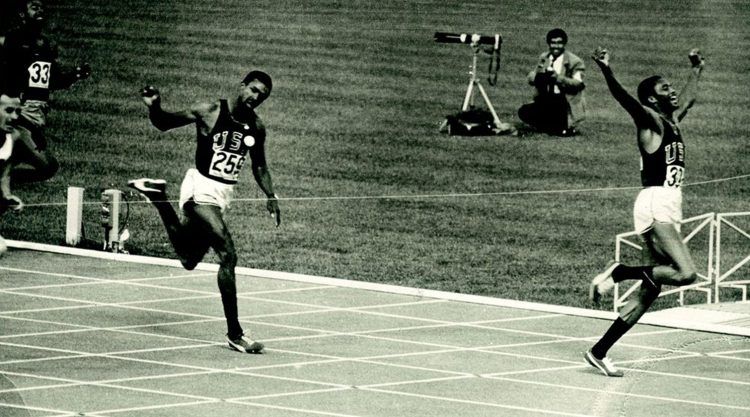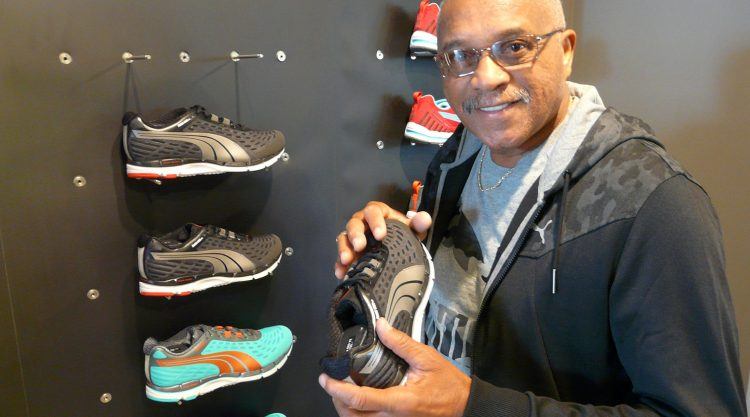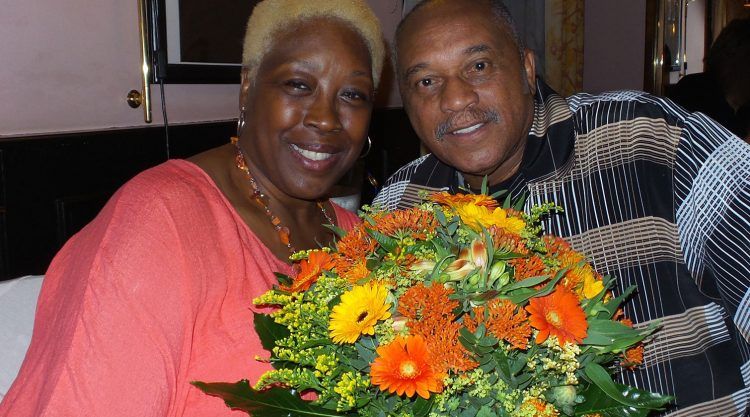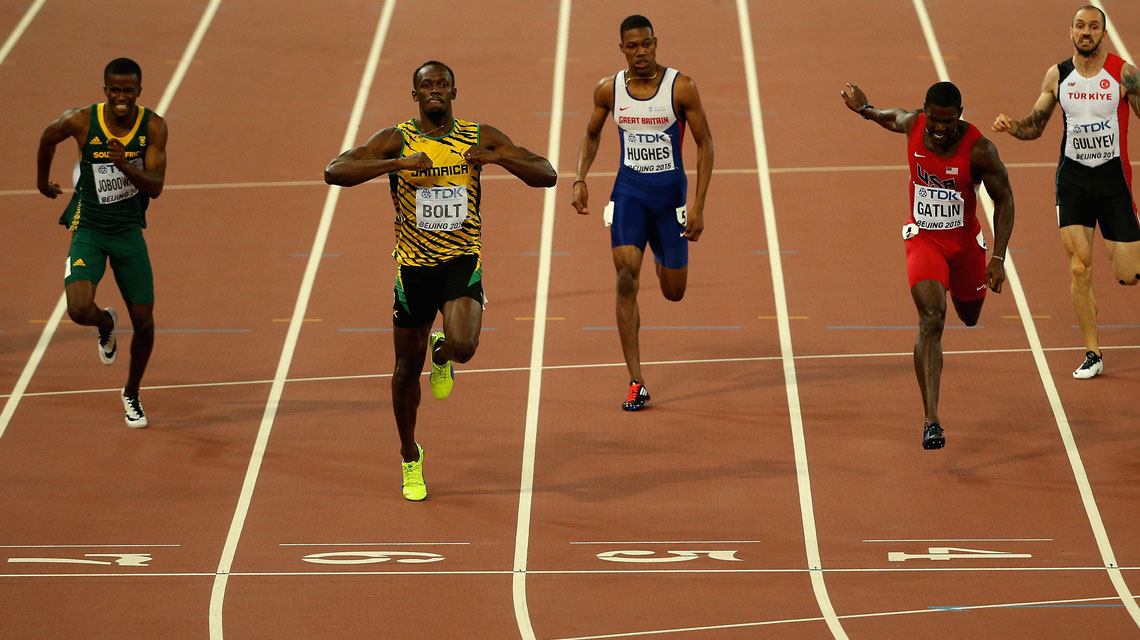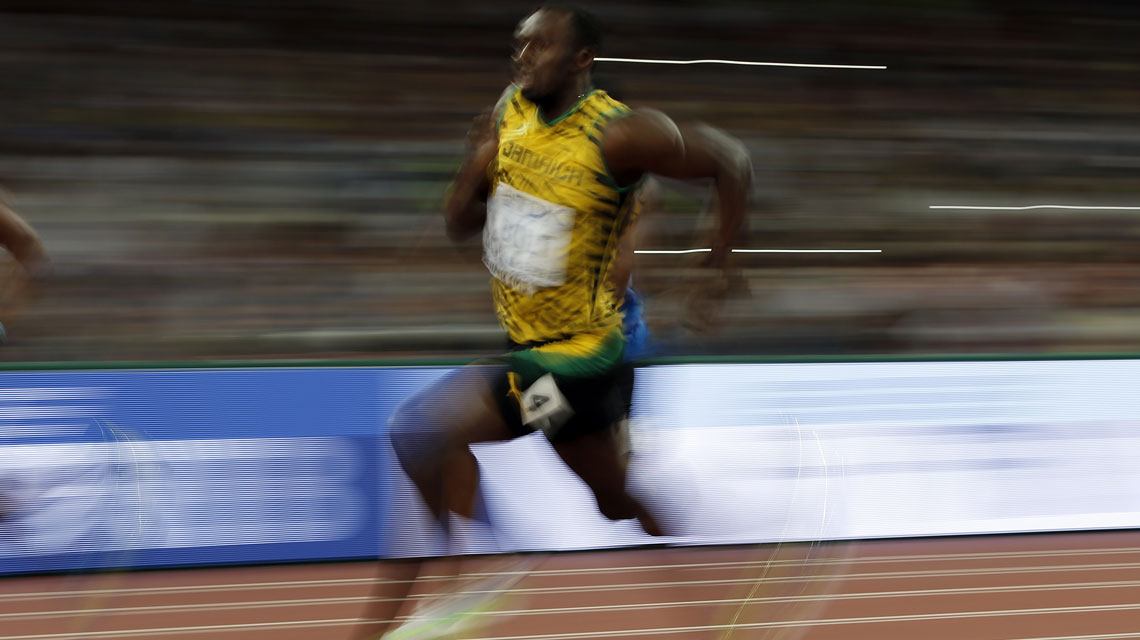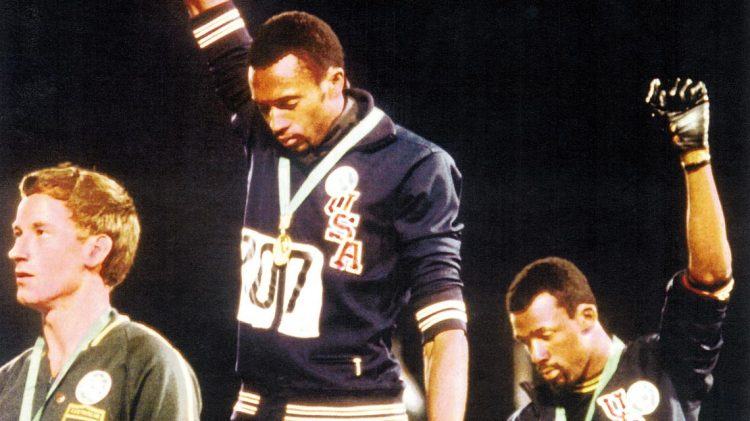
"I WOULD HAVE
BEEN FASTER
THAN USAIN BOLT"
Tommie Smith and his powerful statement
September 8, 2014Tommie Smith and his powerful statement
September 8, 2014Holding eleven world records simultaneously, Tommie Smith is undoubtedly one of the greatest sprinters of all times. His remarkable achievements on the track, however, were overcast by the furor of his “Silent Gesture” in the fight for Human Rights at the Olympic Games 1968 in Mexico. Having just sprinted to gold in world record time over 200 meters for the United States, the black activist found himself jobless and hated by many in his own country afterwards.
CATch Up met the 70-year old at the PUMA Headquarters in Herzogenaurach for an interview when he paid his old sponsor a visit.
Within the span of one year – from May 1966 to May 1967 – you sprinted to ten world records over 200 and 400 meters. The eleventh world record came from the 1968 Olympic Games 200m race in Mexico City. What was your most favourite sports moment ever?
My most favourite sports moment was running the 400 meters in world record time in 1967 at San Jose State University, because it was my first 400m world record. I ran 44.5 seconds on a dirt track with four spikes. If I had had today’s conditions back then, I am sure I could have run 43 seconds. But I was in college, studying and did not really have the time to concentrate on training. On top, my diet was zero and of course the incentives were zero. So I ran for the love of the sports, for the excitement of the competition. The winnings of course would come, if I was good enough in that competitive effort.
If you had worn Usain Bolt’s shoes back then, would you have been faster than he is?
Of course, I would have been faster. Given today’s technology such as the shoes, the tracks and not having to go to school, I could have run the 200 meters in 18.7 seconds. Usain is not in college. He is training and preparing. I on the other hand never ran competitively outside of college. That took a lot away from my training.
Nevertheless, your track record is astounding. What made you so successful and such an outstanding athlete?
I did what others wouldn’t do. Like training at two o’clock in the morning. Getting up out of my bed and going to the track. I was stopped a couple of times by the police, because I was out on the street going to the track, when nobody else was up. I climbed over the fence to get to the track to train and I was already a world record holder then. Things like that made me feel that I was better, because I did something that the other kids wouldn’t do.
Also my thought process was different. It’s about the usage of your muscle to the maximum without tensing up. In other words: The brain controls the body. I was never completely conditioned, unless my mind was conditioned first. Pain is obvious, but how one handles it, isn’t. Everyone handles pain differently. I was elitist in handling pain. What was pain to me training at two o’clock in the morning?
I would train on weekends, when the other guys were partying, I did not join any fraternities and I did not have any girls. It was about the little simple things.
So the mental condition is very important to be a successful athlete?
For me, yes, it was. I tried to make myself better mentally. Today’s mentality is also a lot to put blame on certain conditions or circumstances. If it is raining outside and no one else is training in the rain but me, I am going to be better than the others in rain. Now, if there was more rain in my lane and everyone else had sunshine, then I would have something to complain about. But I do not put complaints where work can overtake stupidity of making false accusations.
What are your memories about that historic 200m race in Mexico in 1968?
That race had a whole history of firsts for me. I wore the PUMA velcro shoes for the first time. It was the first time in the history that the race was run under 20 flat. But it was also the last race I ran.
But only few people know that you were injured.
Yes, I had pulled a muscle earlier that day in the semi-finals. I had been turmoiled by people, they called me or wrote letters saying: “You are going to die. We are going to kill you, black Nigger.” So when that injury happened and I suddenly felt the pain, I thought I had been shot. And I looked down and I saw no blood, and I thought: “Oh, it’s okay. I just pulled a muscle.” So they took me to the medical room and they put me on a table and put ice on it.
And then we got to the 200m final. I looked at the others and I said to myself: “Don’t be a chicken. Be a man. I am fussing myself now.” That really hurt me badly, because I was in trouble mentally. I saw John Carlos and Peter Norman. All these folks were world-class athletes. And they were obviously faster out of the blocks than I was. And I thought: “This is it.”
When I heard the gun, there was no thought. There was just blank. And when I realized what was happening I was mid turn. What a realization! I was in fourth place. Here is the race of my life, injured, with eight of the fastest people of the world and I am in fourth place with a pulled muscle. All this was going through my mind while I was running.
But I saw myself running mentally before I actually ran physically. When I was standing behind the blocks before the start, I already ran my total race. I knew exactly where I would be, when I had to do certain things. The whole race was at full speed. And then I heard the announcer saying: “And Tommie Smith is running pretty well so far.” I heard that. And I thought: “Pretty well? I must be in pretty good shape.” And I ran by John and he looked surprised, too. When I crossed the finish I raised my arms and smiled and this was exactly the same posture as Usain Bolt’s in the Beijing finals. However, the smile stopped abruptly shortly after because of all the politics that was on my mind.
You made use of your success in Mexico and used the victory podium to promote your fight for Human Rights, raising your fist with a black glove and your head bowed during the award ceremony. When did that idea come up to use the Olympics as a stage to raise awareness for injustice?
Once the US black athletes decided not to boycott the Games, which had been the initial plan, I was not prepared to drop the whole issue. I remember, sitting on the side of a bench, thinking: “What am I going to do? “ I can understand that they wanted to compete. There were so many athletes on the team who worked hard to get to where they got. But they were in California. If you went further south, to Mississippi and Alabama, the kids there needed a chance. What happened in the stand was known throughout the world now. And a lot of kids received energy from this, because it represented them. Not just Tommie Smith and John Carlos. We were just the operating machines, that sent out the power to others to also continue social running. That is how I thought. I leap over reality knowing someday it is going to be real.
But there were consequences afterwards?
There were even consequences before. I was being threatened, not being served at restaurants that I went to, being called names, not being able to get a job.
Afterwards, I was not longer able to compete internationally. Mexico City was my last competition. At the height of my career at the age of 24, I had to quit.
Did you ever have moments of regret that you did what you did?
No way. No regrets about what I did. I disliked the idea that someone else stopped me from doing what I wanted to do after that. But then I saw what good it did to young kids and it started a global thought.
How did you and PUMA get together?
When I was training in College, I was wearing Adidas. I ran ten world records in Adidas shoes without getting any money. But the white throwers were getting money. I wondered why they always had new shoes on and I thought: “All those white guys are rich. They always have new shoes.” But they were getting their shoes for free, plus money on top.
One day in 1966, my best friend came up to me and said: “Tommie, you got two world records and your car isn’t even running.” – “Now, what has this got to do with a car?” – “You can get paid for what you do. What if I can show you some people who care more about you than what you have and what you don’t have. What would you think?” I said: “They don’t exist.” – “They do exist and they would like to talk to you.” And this is when I met Rudolf. He was sitting there in his office, smiling. He showed me the shoe and I decided that I would like to wear that shoe. There was no contract signing or something like that. I came back home and started getting things that I had never gotten before. Like new shoes or new PUMA uniforms. And pretty soon, there was money coming in. And that is how I became a PUMA athlete.
What do you look out for when scouting athletes?
As a track and field coach, I would not recruit Number 1 or 2 in the city or in the state. I go after the people who are numbers 3, 4, 5 or 6 when I am recruiting. I am after the fastest people with the greatest mind capacities. When you already think, you have it – that is when the trouble starts. You just can’t coach them. It is easier with a kid that is open-minded and who wants to learn and know about speed.
Do you still do sports today?
I have no choice. I cannot teach what I don’t do. I will at least run 18 miles straight or more per week. Depends if my wife lets me stay in the house all day.
After 1968, Tommie coached athletes and taught sociology at university.
